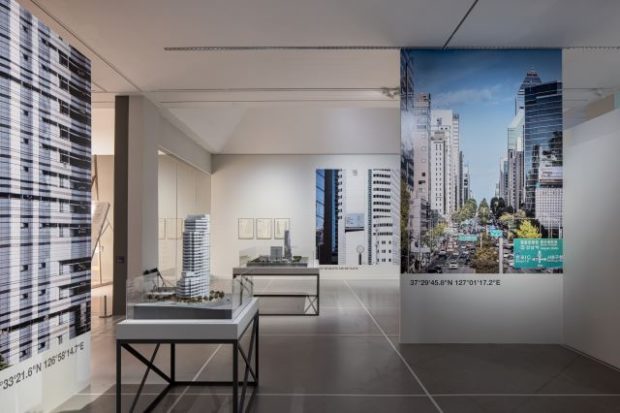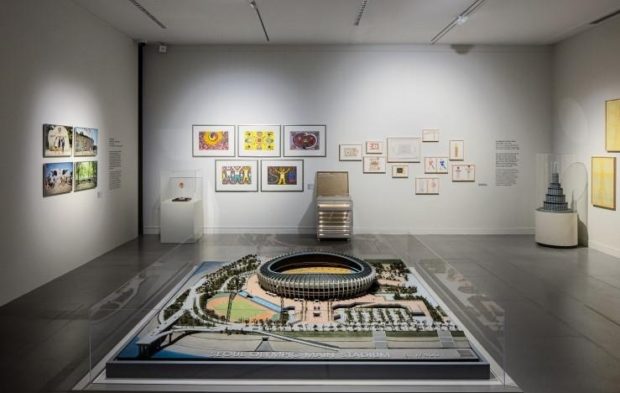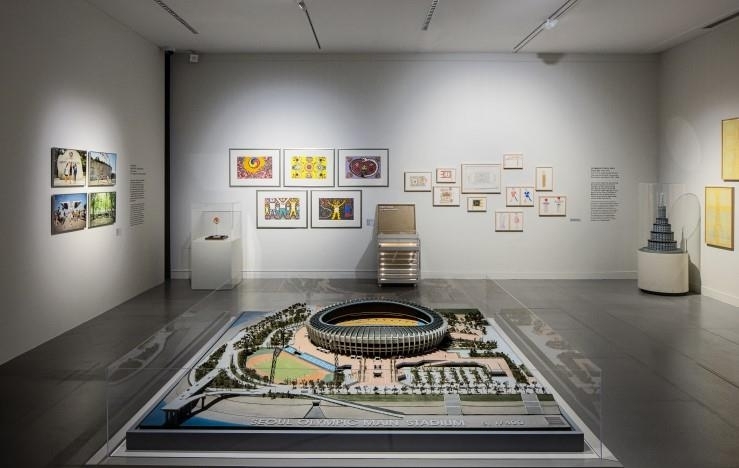
SEOUL — The Gwacheon branch of the National Museum of Modern and Contemporary Art, Korea, is holding an exhibition titled “Olympic Effect: Korean Architecture and Design From 1980s to 1990s.” The show reexamines the foundations of South Korea’s architecture and design culture, which grew rapidly in the 1980s and 1990s.
It presents some 300 artworks, photos, documents and interview clips that shed light on the effects of the 1988 Seoul Olympics on urban development and industrial design.
The landscape of Seoul has never been the same since the decision was made in 1981 to have Seoul host the 1988 Summer Olympics. The nation switched gears, putting everything into the preparations for the worldwide sporting event. It turned the look of Seoul around, transforming it into an economically vibrant and culturally dramatic city.
The changes that Seoul underwent in the late 1980s are still visible to people strolling around the city.
The 1988 Olympic Stadium, designed by renowned architect Kim Swoo-geun, is located in Jamsil. Its forerunners were the 63 Building, then one of Asia’s tallest skyscrapers, and the Korea World Trade Center, a symbol of Korea’s successful trade and industrialization.
The Byeoksan 125 building near Seoul Station — since renamed the Gateway Tower — was also the work of Kim Swoo-geun. Both it and Paik Nam-june’s monumental work “Dada Ik-seon” (“The More, the Better”), a media tower made of TV monitors piled up on top of one another, were born thanks to the 1988 Olympics.

In contrast with the energy of Seoul in 1988, which drew millions of athletes and spectators from around the globe, most of whom were visiting Korea for the first time in their lives, these urban spaces are rather quiet today due to the pandemic.
The inability to celebrate the excitement and warmth of people gathering in stadiums, squares and malls to enjoy events happening year-round is a change the city never expected.
While the MMCA retraces the works of the country’s earlier designers and architects, also on display are reinterpretations of archival materials expressed in newly commissioned artworks, as if it aims to celebrate artists of the past and present together.
Meanwhile, the vast majority of international exhibits and events are still on hold due to the lingering pandemic. The Tokyo Olympics, originally set for 2020, have already been postponed once and are currently slated for July this year, though concerns remain.
“I hope the exhibit will serve as an opportunity to expand visual culture discourse and reflect on the legacy of international events during times like today, in the global pandemic crisis.” said Yun Beom-mo, director of the MMCA.
The offline exhibition at the MMCA’s Gwacheon branch will run through April 11.
During the exhibition period, the MMCA will introduce major works and archives from the exhibition and behind-the-scene episodes via Instagram on the MMCA’s “Olympic Effect” account, ([email protected]).
Updates on exhibitions and visitor rules in regards to COVID-19 will be provided at www.mmca.go.kr.









































